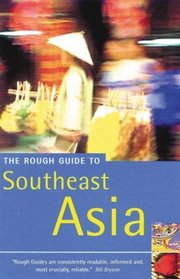Search -
The Rough Guide to Southeast Asia
The Rough Guide to Southeast Asia
Author:
INTRODUCTION Bordered by the Indian subcontinent to the west, and by China and Japan to the north and east, Southeast Asia is a tropical region of volcanoes, rainforest, rice fields and coral reefs, whose constituent countries – Brunei, Cambodia, Indonesia, Laos, Malaysia, the Philippines, Singapore, Thailand and Vietnam – together ma... more »
Author:
INTRODUCTION Bordered by the Indian subcontinent to the west, and by China and Japan to the north and east, Southeast Asia is a tropical region of volcanoes, rainforest, rice fields and coral reefs, whose constituent countries – Brunei, Cambodia, Indonesia, Laos, Malaysia, the Philippines, Singapore, Thailand and Vietnam – together ma... more »
ISBN-13: 9781858288932
ISBN-10: 1858288932
Publication Date: 10/28/2002
Pages: 1,136
Rating: ?
ISBN-10: 1858288932
Publication Date: 10/28/2002
Pages: 1,136
Rating: ?
0 stars, based on 0 rating
Genres:




